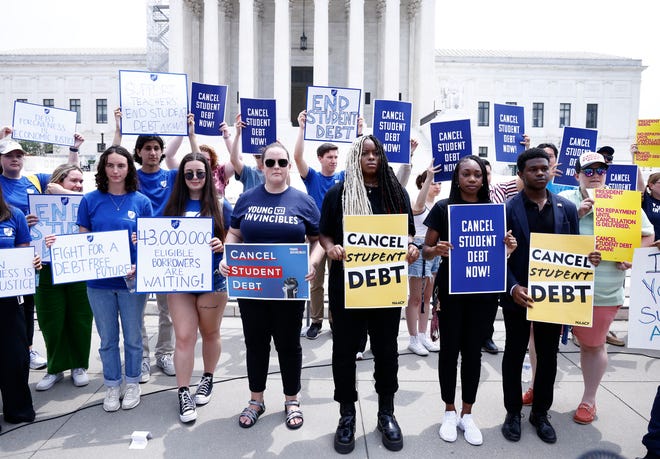During this summer, a team of students from MIT embarked on a journey to the sou …
Student debt relief discussions conclude with acrimony, possibility of future meetings
Jennifer Livingstone

President Joe Biden’s Plan B for student loan debt forgiveness faced criticism this week from a committee tasked with assessing its scope and generosity.
The main complaint? Most committee members felt that the plan did not go far enough. As negotiations concluded, tensions ran high among the various stakeholders, including borrowers and loan servicers.
Some panel members requested an additional session with the Education Department to discuss potential solutions for America’s escalating student loan crisis. The agency indicated that extending the talks was a possibility but did not make a firm commitment.
The conversation took a bitter turn as negotiations wrapped up. The growing discord reflected the significant gap between the Biden administration and leading student loan experts regarding the best course of action after the Supreme Court invalidated the president’s initial plan.
“If this is the primary broad-based relief, I think it’s going to be very disappointing,” expressed one committee member representing borrowers, Sarah Butts, when commenting on the agency’s recommendations thus far.
Walking the line of student loan debt forgiveness
The Biden administration is grappling with two competing forces: those who advocate for extensive forgiveness (similar to the plan rejected by the Supreme Court) and critics who are prepared to legally challenge any debt forgiveness plan from the administration. Striking a balance between these factions has proven challenging and has garnered criticism from both the left and right.
Last week, the Department of Education provided some insight into the extent of their proposed second attempt at debt forgiveness. Their draft rules outlined two significant changes: relief for long-term borrowers and cancellation of up to $20,000 in debt for borrowers affected by interest inflation.
Biden’s student loan relief plan: Provides assistance to borrowers with existing loans and high interest rates.
However, the proposed forgiveness came with certain conditions. For instance, the department endorsed debt cancellation for individuals with older federal loans, provided that they commenced repayment before January 1, 2005. Regarding interest-driven debt, the department’s maximum forgiveness amount was $20,000 beyond the initial loan amount taken out by lower-income borrowers.
These caps and restrictions became significant points of contention during this week’s discussions.
“This isn’t broad enough,” expressed Sherrie Gammage, a negotiator representing borrowers who attended four-year programs.
John Whitelaw, a lawyer advocating for borrowers with disabilities, shared similar sentiments, questioning why the department would limit relief when circumstances warrant broader forgiveness.
While the panel did approve some forms of relief, they were unable to reach a consensus regarding these more significant components.
“We understand that you desire to eliminate caps and cliffs and provide greater relief,” acknowledged Tamy Abernathy, a policy coordinator for the Education Department.
She added, “However, differences of opinion are inevitable.”
What they agreed upon: Relief for victims of predatory colleges
From the outset, it was unlikely that the committee would agree on all aspects of the plan. Disagreements, however, do not necessarily derail the proposal but rather prolong the process.
Despite the prevailing frustrations, Tuesday marked a success for a specific group of borrowers: those who attended colleges with questionable business practices. The committee approved the cancellation of loan debt for students who attended non-compliant schools or schools that have been forced to shut down (among other predatory programs).
Whose student loan debt was canceled? Biden forgives an additional $5 billion in student loan balances.
What comes next?
By Tuesday, many negotiators concluded that extending the talks was the only way forward.
“We should consider adding another session that is more targeted and focused than our previous discussions,” suggested panel lawyer Kyra Taylor.
While such extensions are not uncommon in Washington, they present procedural challenges for the government and further prolong the time it takes for Americans to receive any relief.
The Education Department aims to finalize a proposal by May of next year. This proposal would then undergo public comment before becoming a reality.
It is possible that this timeline could be further delayed.

